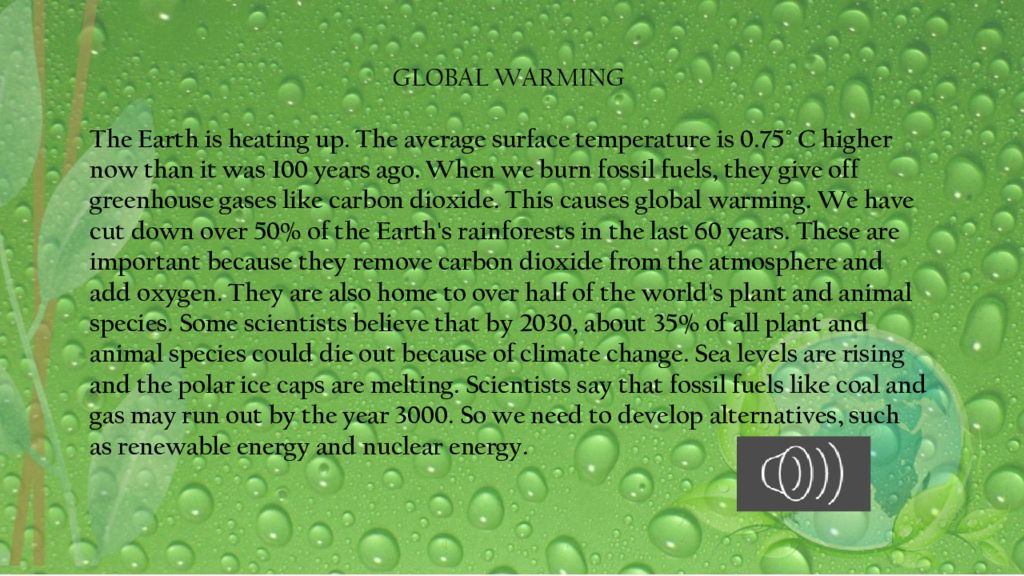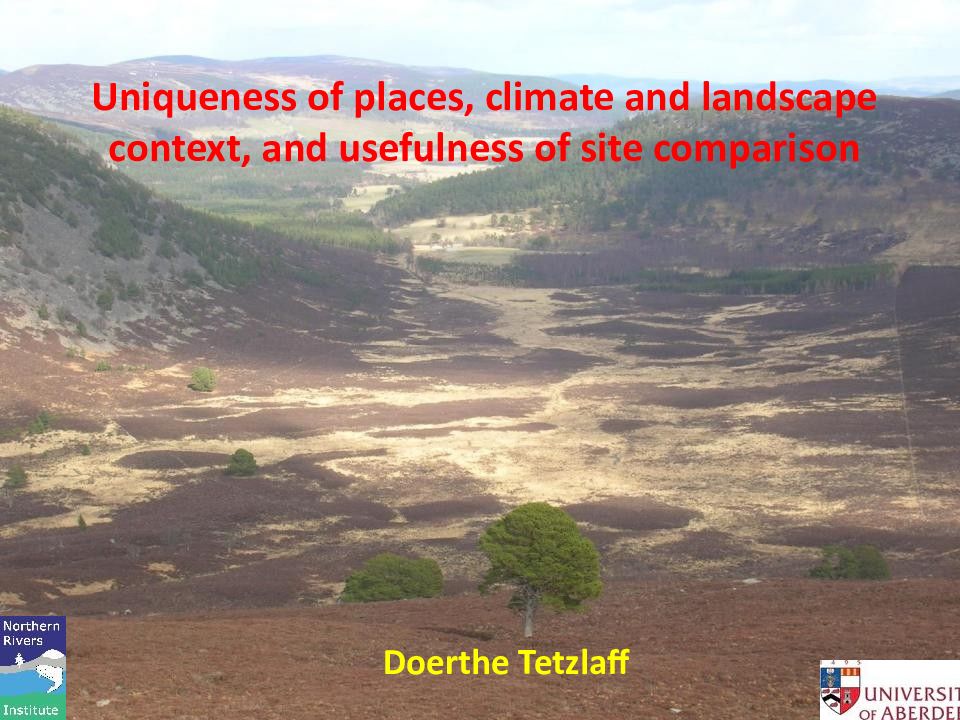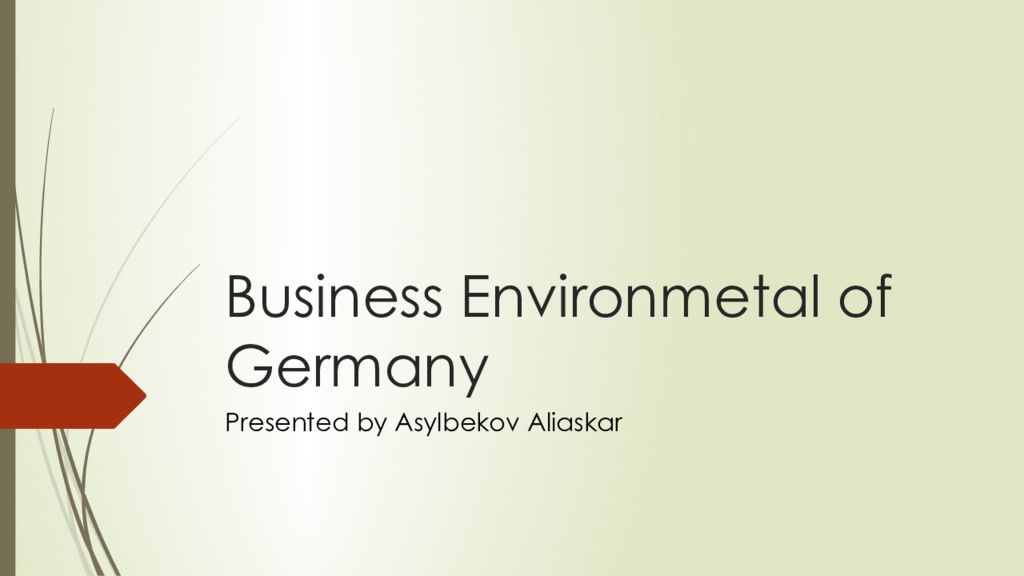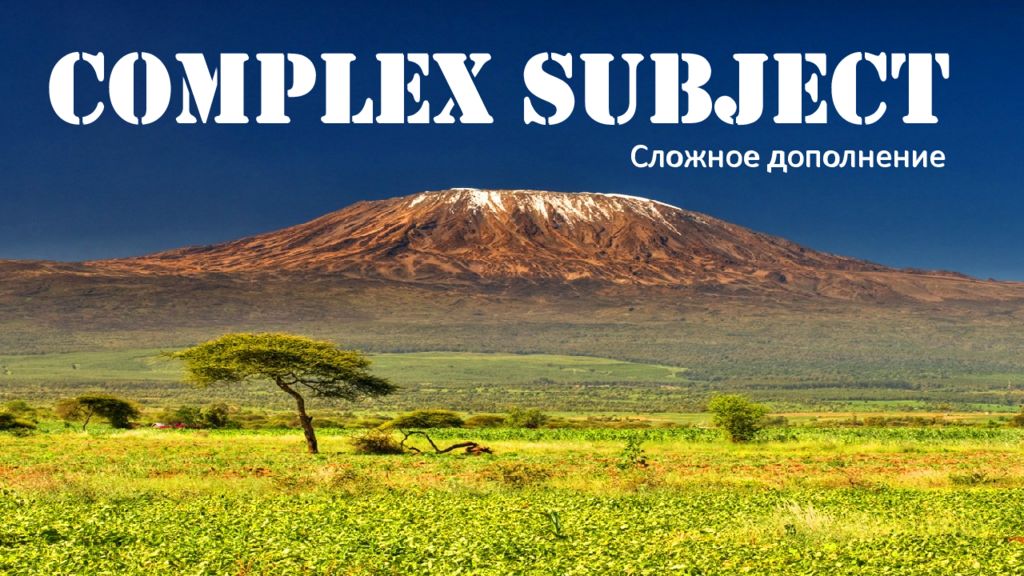Первый слайд презентации
Тренировочный вариант ЕГЭ по английскому языку по теме " Природа и проблемы экологии "
Слайд 3: Задание 1 Created by Evgeniya Tashchilina for Skyteach, 2020© Tasks taken from fipi.ru
Задание 1 Вы услышите 6 высказываний. Установите соответствие между высказываниями каждого говорящего 1-6 и утверждениями, данными в списке A-F. Используйте каждое утверждение, обозначенное соответствующей цифрой, только один раз. В задании есть одно лишнее утверждение. Вы услышите запись дважды. Занесите свои ответы в таблицу. Created by Evgeniya Tashchilina for Skyteach, 2020© Tasks taken from fipi.ru I am sure that wise attitude to basic earth supplies is necessary. I find many simple ways to help our planet in everyday life. I am for the use of energy saving practices in house construction. I do not want my family to live in polluted environment. I am afraid of the after-effects of human activities. I would like to see new energy saving laws introduced. I feel unhappy because I can’t change public attitude to our planet.
Слайд 4: Задание 2 Created by Evgeniya Tashchilina for Skyteach, 2020© Tasks taken from fipi.ru
Задание 2 Jim has a regular job with Greenpeace. Jim says that people made the shore dirty while having fun. There were boys only in Jim’s team. Lisa doesn’t know how to become a volunteer. Jim joined Greenpeace because of his interests. You have to be older than 14 to become a volunteer. Lisa will wait till she’s 15 to contact a volunteer organization. Вы услышите диалог. Определите, какие из приведённых утверждений А–G соответствуют содержанию текста (1 – True), какие не соответствуют (2 – False) и о чём в тексте не сказано, то есть на основании текста нельзя дать ни положительного, ни отрицательного ответа (3 – Not stated). Занесите номер выбранного Вами варианта ответа в таблицу. Вы услышите запись дважды. Created by Evgeniya Tashchilina for Skyteach, 2020© Tasks taken from fipi.ru
Слайд 5: Задания 3-9 Created by Evgeniya Tashchilina for Skyteach, 2020© Tasks taken from fipi.ru
Задания 3-9 Вы услышите интервью. В заданиях 3–9 запишите в поле ответа цифру 1, 2 или 3, соответствующую выбранному Вами варианту ответа. Вы услышите запись дважды. 3. Sarah’s love for animals started when she … became a college student. first went to Africa. was a young girl. 4. At her first job Sarah wanted to make money for her … future education. African trip. documentary film. 5. When Sarah first tried to study monkeys, she … failed at her attempt. became well-known. befriended many animals. 6. Sarah went to Africa for the second time together with … her colleague. her mother. an African scientist. Created by Evgeniya Tashchilina for Skyteach, 2020© Tasks taken from fipi.ru 7. The monkeys learned to trust Sarah because she … played games with them. fed them for a long time. tried to copy their behaviour. 8. It took Sarah two years to … be accepted into a group of monkeys. study the basics of monkeys’ behaviour. establish a camp on the shore. 9. Sarah considers her African years as the best time of her life because she … learned to climb trees naturally. had a lot of fun there. was able to join the world of animals.
Слайд 7: Задание 10
Установите соответствие между текстами A–G и заголовками 1–8. Занесите свои ответы в таблицу. Используйте каждую цифру только один раз. В задании один заголовок лишний. 1. Physical characteristics 2. Personal measure 3. Ways of using 4. More than survival 5. Water-related diseases 6. Worrying statistics 7. Hard to get 8. Natural threats A. Water is the most important resource for mankind. It is a condition for all life on our planet, a factor for any social and technological development, a possible source of welfare or misery, cooperation or conflict. 97 percent of it is undrinkable because it’s saltwater. Only 3 percent of the world’s water supply is fresh water, and 77 percent of that is frozen. Of the 23 percent that is not frozen, only a half a percent is available to supply everyone with all the water they need to survive. B. Natural disasters like earthquakes, tornados, hurricanes and other types of incidents can disrupt drinking water and wastewater systems. Water consumers, water and wastewater utilities, and private well and septic owners should be informed on what to do in emergency. It is important to be prepared because drinking water and wastewater disruptions can directly threaten your health, the health of your family, and the health of your community. C. Water security is about fighting poverty and hunger, and protecting the environment. It is about saving children from disease. It is about allowing girls to go to school instead of walking kilometers to fetch water. It is about providing women and men with access to sanitation, wherever they live. Fundamentally, it is about peace. When we talk about water security, we are really talking about human rights, human dignity, and the development of all societies. D. Water is the only substance that occurs naturally as a solid (ice), a liquid and a gas (water vapor). It covers about 70 percent of the Earth for approximately 1,386 million cubic kilometers. In its purest form, it’s odorless, nearly colorless and tasteless. Water molecules are naturally attracted and stick to each other like magnets. This is the reason behind many of water’s special properties, such as the fact that it’s denser in its liquid state than in its solid state (ice floats on water). E. You use water to clean yourself, your clothes, your dishes, your car and everything else around you. You can travel on it or jump in it to cool off on hot summer days. Many of the products that you use every day contain water or were manufactured using it. It seems pretty simple, and yet there are a lot of things about it that scientists still don’t fully understand. F. Every day you lose water. For your body to function properly, you must replenish its water supply. So how much fluid does the average, healthy adult living in a temperate climate need? The Institute of Medicine determined that an adequate intake for men is roughly 3 liters a day. The intake for women is 2.2 liters a day. But in truth, your water needs depend on many factors, including your health, how active you are and where you live. G. Around 1.1 billion people globally do not have access to clean water supply sources whereas 2.4 billion people do not have bathrooms with running water. About 2 million people die every year due to water-related diseases, most of them are children less than 5 years of age. The most affected are people in developing countries, living in extreme conditions of poverty.
Слайд 8: Задание 11 Created by Evgeniya Tashchilina for Skyteach, 2020© Tasks taken from fipi.ru
Прочитайте текст и заполните пропуски A–F частями предложений, обозначенными цифрами 1–7. Одна из частей в списке 1–7 лишняя. Занесите цифры, обозначающие соответствующие части предложений в таблицу. Wild animals in cities Have you ever seen bears in Vancouver parks, leopards on the streets of Mumbai or wild pigs in gardens in Berlin? Recently, there A ______________________ on TV about big animals coming into towns and cities. What happens when wild animals come into our cities? Is it dangerous for us and the animals? Wild animals usually come into cities to look for food. In Cape Town, South Africa, baboons sometimes come into the suburbs. They eat fruit from gardens and go into people’s kitchens and take food from cupboards and fridges! Baboons are B ______________________ children and fight with pet dogs. Many people do not like them, but the city can be dangerous for baboons too. Sometimes, baboons are C ______________________ human food can be very bad for their teeth. The city council in Cape Town has a team of Baboon Monitors whose job is to find baboons D ______________________ to the countryside. This makes the city safer for people and is healthier for the baboons. However, the main problem is that a lot of baboons will come back to the city to find food again. In Berlin, Germany, groups of wild pigs have come into the city for hundreds of years, but now the winters are warmer, there are even more pigs than in the past. Pigs eat flowers and plants and dig in gardens and parks in the city. They also E ______________________ accidents. Some city residents like the pigs and give them food. But the city council is worried about the traffic accidents, so they F ______________________ have put up fences to stop the pigs coming into the city. 1. cause lots of problems 2. in the city and take them back 3. walk in the street and cause traffic 4. hurt in car accidents and the sugar in 5. strong animals and sometimes they scare 6. have been many reports in newspapers and 7. have told people to stop giving the pigs food and
Слайд 9: Задания 12-18
Do you believe in climate change? This may seem like an odd question for a climate scientist to ask, but it is one I am constantly asked now. The typical discussion starts: "I know that the climate is changing, but hasn't it always changed through natural cycles?" Then they will often give an example, such as the medieval warm period to prove their point. Those asking the question include a wide range of people I meet in the pub, friends, politicians and, increasingly, even some of those active in sustainable development and the renewable energy businesses. What I find interesting is that I have known many of these people for a long time and they never asked me this before. Recent studies show that public acceptance of the scientific evidence for man-made climate change has decreased. However, the change is not that great. The difference I find in talking to people is that they feel better able to express their doubts. This is very hard for scientists to understand. The scientific evidence that humanity is having an effect on the climate is overwhelming and increasing every year. Yet public perception of this is confused. People modify their beliefs about uncomfortable truth, they may have become bored of constantly hearing about climate change; or external factors such as the financial crisis may have played a role. Around three years ago, I raised the issue of the way that science can be misused. In some cases scare stories in the media were over-hyping climate change, and I think we are paying the price for this now with a reaction the other way. I was concerned then that science is not always presented objectively by the media. What I don't think any of us appreciated at the time was the depth of disconnect between the scientific process and the public. Which brings me to the question, should you believe in climate change? The first point to make is that it's not something you should believe or not believe in – this is a matter of science and therefore of evidence – and there's a lot of it out there. On an issue this important, I think people should look at that evidence and make their own mind up. We are often very influenced by our own personal experience. After a couple of cold winters in the UK, the common question was: "Has climate change stopped?" despite that fact that many other regions of the world were experiencing record warm temperatures. And 2010 was one of the warmest years on record. For real evidence of climate change, we have to look at the bigger picture. You can see research by the Met Office that shows the evidence of man-made warming is even stronger than it was when the last report was published. A whole range of different datasets and independent analyses show the world is warming. There is a broad consensus that over the last half-century, warming has been rapid, and man-made greenhouse gas emissions are very likely to be the cause. Ultimately, as the planet continues to warm, the issue of whether you believe in climate change will become more and more irrelevant. We will all experience the impacts of climate change in some way, so the evidence will be there in plain sight. The more appropriate questions for today are how will our climate change and how can we prepare for those changes? That's why it's important that climate scientists continue their work, and continue sharing their evidence and research so people can stay up to date – and make up their own minds. 12. Paragraph 1 says that people … think that the climate is not changing. doubt that climate change is man-made. believe that in medieval times climate was harsh. tend to ask strange questions about climate change. 14. What is meant by “ uncomfortable truth ” in paragraph 4? Scientific reports on climate. Evidence of man-made climate change. World financial crisis. People’s personal beliefs. 16. The author gives the example of cold winters in the UK to point out that … the weather in Britain has always been unpredictable. the Met Office doesn’t make public the evidence it collected. there is evidence that the climate change has stopped finally. people draw conclusions based on their own experience rather than scientific evidence. 17. How does the author feel about the evidence of climate change? It’s not enough yet. It’s not very convincing. It soon would become conclusive. It’s irrelevant so far. 13. According to recent studies of public attitude to climate change, more and more people … refuse to accept the scientific proof of warming. know that there is no clear evidence of climate change. think that scientists are wrong about climate warming. have stopped trusting climate science. 15. What does “ this ” in paragraph 5 refer to? Scientific evidence of climate change. Negative public attitude to climate change. The way the climate change used to be presented. The historical impact of climate change. 18. The author wants climate scientists to continue their work because … they have not shared their findings with the public. people need to know how to get ready for changes. society demands more research in this field. people don’t want to make up their own minds. Прочитайте текст и выполните задания 12–18. В каждом задании запишите в поле ответа цифру 1, 2, 3 или 4, соответствующую выбранному Вами варианту ответа.
Слайд 11: Задания 19-25 Created by Evgeniya Tashchilina for Skyteach, 2020© Tasks taken from fipi.ru
Прочитайте приведённые ниже тексты. Преобразуйте, если необходимо, слова, напечатанные заглавными буквами в конце строк, обозначенных номерами 19–25, так, чтобы они грамматически соответствовали содержанию текстов. Заполните пропуски полученными словами. Каждый пропуск соответствует отдельному заданию из группы 19–25. 19. To divers, the underwater world is silent, and we call the ocean the “silent deep.” But to a fish, the underwater world isn’t silent at all. Fish can “hear” other fish __________________ through the water. MOVE 20. Fish __________________ ears, but they do have a structure inside their head that is very much like our own inner ear. NOT HAVE 21. This structure is sensitive to vibrations in the water, __________________ by other fish. MAKE 22. Research __________________ that some fish are sensitive to ordinary sounds, too. Catfish can probably hear everything we hear! SHOW Can fish hear? Live green! 23. The Oriental Development Company is an enterprise in Japan. It specializes in green inventions. One of their newest inventions is connected with __________________ paper. RECYCLE 24. The machine can recycle waste paper. It __________________ to the public several months ago. INTRODUCE 25. A big advantage is that this machine __________________ any harmful emissions. NOT PRODUCE
Слайд 12: Задания 26-31 Created by Evgeniya Tashchilina for Skyteach, 2020© Tasks taken from fipi.ru
Прочитайте приведённый ниже текст. Образуйте от слов, напечатанных заглавными буквами в конце строк, обозначенных номерами 26–31, однокоренные слова так, чтобы они грамматически и лексически соответствовали содержанию текста. Заполните пропуски полученными словами. Каждый пропуск соответствует отдельному заданию из группы 26–31. Wild Animal Park 26. The wide, wild world of animals interests many people. But, as civilizations crowd animals out of their natural habitats, __________________ and concerned citizens ask, “What is going to happen to animals?” SCIENCE 27. One place that has pioneered research in the __________________ of rare animals is the Wild Animal Park of San Diego, California. Its special concern is endangered species. CONSERVE 28. Although people can visit the Park, it is a 720-hectar preserve where animals walk __________________. Many people have a unique opportunity to take photos of rare wild animals in their natural environment. FREE 29. People all over the world have helped with the __________________ of the Park. It was planned in 1959; it was opened in 1972. So it took 13 years to build it. DEVELOP 30. Divided into________________ sections, the Park has areas similar to the animals’ natural habitats in Africa and Asia. GEOGRAPHY 31. Since the Wild Animal Park opened, it has become famous for its captive breeding work. More than 86 per cent of animals born in the park survive. Many _________________ travel to California to watch wildlife and enjoy beautiful nature. FOREIGN
Слайд 13: Задания 32-38 Created by Evgeniya Tashchilina for Skyteach, 2020© Tasks taken from fipi.ru
Задания 32-38 Прочитайте текст с пропусками, обозначенными номерами 32–38. Эти номера соответствуют заданиям 32–38, в которых представлены возможные варианты ответов. Запишите в поле ответа цифру 1, 2, 3 или 4, соответствующую выбранному Вами варианту ответа. Created by Evgeniya Tashchilina for Skyteach, 2020© Tasks taken from fipi.ru Molly the Cactus Lady Anna had a lovely garden with lots of flowers. All the flowers would talk, sing and play all day. Only Molly the Сactus could not join them. The mean flowers would only 32 ______ fun of her. “People stop to smell and touch me, but you neither smell nor look good!” the Rose flower would say and all the flowers would start laughing. Poor Molly was very sad and lonely. Once, Lady Anna went to the neighboring town and stayed there for a 33 ______ time. The flowers began to worry. “It is so sunny! We need to be watered quickly; 34 ______ we will all dry up!” said the Lily flower in dismay. The Rose flower was crying. “What is the matter, Rose? We are all waiting 35 ______ water,” said the Tulip flower. “Oh, I’m worried about my new flower. It may dry out even before blooming!” sobbed Rose. The flowers started discussing what could be done to save little Rose, but no one could think 36 ______ a solution. Then Molly the Cactus said “I can give water to little Rose. I have water stored in me, which is more important for Rose now”. “Little Rose bud will survive!” cheered everybody. Then the Rose flower turned to Molly and said “Molly, we must 37 ______. Even though we were mean, you helped us. You have taught us an important lesson. It is not how one 38 ______, but how one behaves that makes one a good or a bad person”. 32. 1) have 2) take 3) do 4) make 33. 1) high 2) long 3) big 4) huge 34. 1) otherwise 2) however 3) although 4) moreover 35. 1) out 2) up 3) on 4) for 36. 1) about 2) of 3) over 4) at 37. 1) excuse 2) regret 3) apologise 4) forgive 38. 1) looks 2) glances 3) sees 4) watches
Слайд 15: Задание 39 Created by Evgeniya Tashchilina for Skyteach, 2020© Tasks taken from fipi.ru
Задание 39 Для ответов на задания 39 и 40 используйте бланк ответов № 2. Черновые пометки могут делаться прямо на листе с заданиями, или можно использовать отдельный черновик. При выполнении заданий 39 и 40 особое внимание обратите на то, что Ваши ответы будут оцениваться только по записям, сделанным в БЛАНКЕ ОТВЕТОВ № 2. Никакие записи черновика не будут учитываться экспертом. Обратите внимание также на необходимость соблюдения указанного объёма текста. Тексты недостаточного объёма, а также часть текста, превышающая требуемый объём, не оцениваются. Запишите сначала номер задания (39, 40), а затем ответ на него. Created by Evgeniya Tashchilina for Skyteach, 2020© Tasks taken from fipi.ru You have received a letter from your English-speaking pen-friend Jerald who writes: … This summer we’ve had two tornadoes. Why do you think some people “hunt” them, instead of hiding from them? What natural phenomena would you call the most dangerous for people, and why? Will we ever learn to protect ourselves from them? Yesterday I spent the whole evening watching a basketball game … Write a letter to Jerald. In your letter – answer his questions – ask 3 questions about the basketball game Write 100 – 140 words. Remember the rules of letter writing.
Слайд 16: Задание 40 Created by Evgeniya Tashchilina for Skyteach, 2020© Tasks taken from fipi.ru
Задание 40 Для ответов на задания 39 и 40 используйте бланк ответов № 2. Черновые пометки могут делаться прямо на листе с заданиями, или можно использовать отдельный черновик. При выполнении заданий 39 и 40 особое внимание обратите на то, что Ваши ответы будут оцениваться только по записям, сделанным в БЛАНКЕ ОТВЕТОВ № 2. Никакие записи черновика не будут учитываться экспертом. Обратите внимание также на необходимость соблюдения указанного объёма текста. Тексты недостаточного объёма, а также часть текста, превышающая требуемый объём, не оцениваются. Запишите сначала номер задания (39, 40), а затем ответ на него. Created by Evgeniya Tashchilina for Skyteach, 2020© Tasks taken from fipi.ru Comment on the following statement. It is the government’s responsibility to protect the environment. What is your opinion? Do you agree with this statement? Write 200 – 250 words. Use the following plan: − make an introduction (state the problem) − express your personal opinion and give 2–3 reasons for your opinion − express an opposing opinion and give 1–2 reasons for this opposing opinion − explain why you don’t agree with the opposing opinion − make a conclusion restating your position
Слайд 18: Задание 1 Created by Evgeniya Tashchilina for Skyteach, 2020© The task taken from Английский язык. Курс на ЕГЭ. 10-11 классы. стр.115
Задание 1 Task 1. Imagine that you are preparing a project with your friend. You have found some interesting material for the presentation and you want to read this text to your friend. You have 1.5 minutes to read the text silently, then be ready to read it out aloud. You will not have more than 1.5 minutes to read it. Created by Evgeniya Tashchilina for Skyteach, 2020© The task taken from Английский язык. Курс на ЕГЭ. 10-11 классы. стр.115 Many lands that had once been swamps were drained or filled in. There are different reasons why people drained swamplands. Some were drained to fight diseases caused by insects that lived in them. Because swamps were considered unpleasant places in which to live and harmful to health, many people thought that unless they were drained the land was worthless. Other swamps were drained to make new land. As the population grew and more land was needed, people drained swamps or filled them to make room for more farms and factories, more roads and airports. Few people thought that it might be harmful to get rid of swamps. As swamps disappeared, other things happened. There were both more floods and more droughts than before. There were also more fires, for swamps had acted as firebreaks. Hunters noticed that there was less wild game. Wild life that once lived in the swamps was dying out, because it had no place to live.
Слайд 19: Задание 2 Created by Evgeniya Tashchilina for Skyteach, 2020© Tasks taken from fipi.ru
Задание 2 Task 2. Study the advertisement. Created by Evgeniya Tashchilina for Skyteach, 2020© Tasks taken from fipi.ru You are considering using the clinic and now you’d like to get more information. In 1.5 minutes you are to ask five direct questions to find out about the following: 1) location 2) opening hours 3) transportation 4) kinds of animals treated 5) if home visits are possible You have 20 seconds to ask each question. Our vet clinic will take care of your pet!
Слайд 20: Задание 3 Created by Evgeniya Tashchilina for Skyteach, 2020© Pictures taken from https://unsplash.com/
Задание 3 Task 3. These are photos from your photo album. Choose one photo to describe to your friend. Created by Evgeniya Tashchilina for Skyteach, 2020© Pictures taken from https://unsplash.com/ You will have to start speaking in 1.5 minutes and will speak for not more than 2 minutes (12–15 sentences). In your talk remember to speak about: • where and when the photo was taken; • what/who is in the photo; • what is happening; • why you keep the photo in your album; • why you decided to show the picture to your friend. You have to talk continuously, starting with: “I’ve chosen photo number…” Photo 3 Photo 2 Photo 1
Слайд 21: Задание 4 Created by Evgeniya Tashchilina for Skyteach, 2020© Tasks taken from fipi.ru
Задание 4 Task 4. Study the two photographs. In 1.5 minutes be ready to compare and contrast the photographs: Created by Evgeniya Tashchilina for Skyteach, 2020© Tasks taken from fipi.ru • give a brief description (action, location) • say what the pictures have in common • say in what way the pictures are different • say which kind of life you’d prefer for wild animals • explain why You will speak for not more than 2 minutes. You have to talk continuously.
Слайд 23: Created by Evgeniya Tashchilina for Skyteach, 2020© Tasks taken from fipi.ru
Аудирование Чтение Задание 1 1B 2D 3E 4A 5G 6C Задание 10 A 7 B 8 C 4 D 1 E 3 F 2 G 6 Задание 2 A2 B1 C3 D1 E1 F2 G2 Задание 11 A 6 B 5 C 4 D 2 E 3 F 7 Задания 3-9 3- 3 4- 2 5- 1 6- 2 7- 2 8-1 9- 3 Задания 12-18 12- 2 13-1 14- 2 15- 3 16- 4 17- 3 18- 2
Последний слайд презентации: Тренировочный вариант ЕГЭ по английскому языку по теме " Природа и проблемы: Created by Evgeniya Tashchilina for Skyteach, 2020© Tasks taken from fipi.ru
Задания 19-25 Задания 26-31 Задания 32-38 19. MOVING 26. SCIENTISTS 32. 4 20. DONOTHAVE 27. CONSERVATION 33. 2 21. MADE 28. FREELY 34. 1 22. SHOWS 29. DEVELOPMENT 35. 4 23. RECYCLING 30. GEOGRA PHICAL 36. 2 24. WASINTRODUCED 31. FOREIGNERS 37. 3 25. DOESNOTPRODUCE 38. 1

































